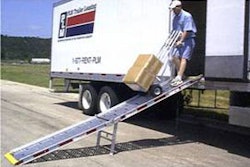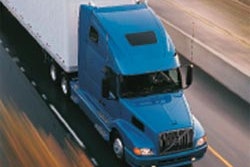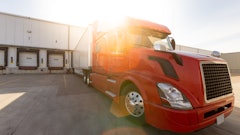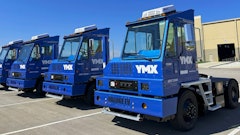Case delivery is getting harder to do…profitably. What used to be a generous delivery footprint (“Park it anywhere, just get it in here”) is now a tiny navigational nightmare compounded with speeding motorists, city ordinances and delivery windows that limit time in and out of the stop. An available driver pool full of ex-farm boys waiting eagerly to make great pay behind the wheel is now limited to small pockets of Generation-Xers with very limited “heavy work experience.”
Top this off with the moving target of hours of service (HOS) regulations, tightening truck engine and reefer diesel emission standards and painful workmen’s compensation issues and it’s easy to see that net revenue growth cannot pace gross revenue growth without big changes.
The average broadline food distributor reports 10 to 12 stops per day. Multiply this factor by expanding city populations, higher fuel costs, more delivery motions required per stop and an aging core workforce (which could be more prone to fatigue and injuries), and it’s easy to realize that profitability may “flat line” or actually diminish as sales increase without realizing scale improvements from existing assets.
So how do foodservice companies grow revenue and increase scale profitability when more drivers, more tractors and more trailers are needed in such a harsh delivery environment?
The last frontier—trailer access: Although emerging technology in tractors and trailers is seen annually, given the attention those larger ticket items demand, one area that receives very little attention by comparison is trailer access. Trailer access, the ability to get products into and out of the trailer without damage, quickly and safely, may be the last unexploited frontier in achieving scale savings from existing truck and trailer assets.
ost traditional trailer designs are from an era no longer recognized by today’s rigorous challenges.
Old designs on new trailers: For instance, take the old side door “stirrup step.” Most designs require the driver to kick like a Las Vegas show girl to merely get his foot on the step’s rung. Then (pulling with one hand on the trailer’s grab handle) the driver can manage to get a knee into the door’s threshold.
This “tree house” access demands a great deal of muscle strain on the driver’s body—with risk for injury to shoulders, backs, hips and knees—and none of the step surfaces avail much friction for slip resistance. Although this design hails from the late 1930s, it can still be found today on most truck trailers with side doors.
“The first stop”: As cube space is at a premium, most drivers open trailer side access doors to the first few delivery points only to realize there is nowhere to stand and grab the first top cases safely. So, they learn from their predecessors—the drivers that taught them—how to stand on the threshold of the door while bracing themselves within the frame for leverage. Of course, the only place for those cases to go is…the ground.
Side door ramps—crossing traffic: Additionally, if the driver does have the benefit of a walk ramp, coming out the side door will require a “perpendicular offload” (see Inset A) that requires a larger delivery footprint and may put the driver into direct competition with motorists on the road for right of way during off loading.
Simple Solutions
Help on the side: Although these challenges seem daunting, the solution to many of these instances can be a simple one. Most case delivery drivers agree that a platform with adequate steps and available standing room would substantially increase their cycle time at the delivery point, while providing them the safety they need to avoid lost time injuries. These same side door platforms can divert ramp traffic down the side of trailer (see longitudinal delivery in Inset B) to avoid running into the path of other motorists.
Side door platforms can be made of aluminum or steel and are available in many sizes, configurations, styles and installation methods:
Underbelly style: Mounts under the frame of the trailer at the place it will be used.
Portable style: Carrier and platform are mounted under the trailer’s frame, enabling the driver to move the platform to different doors.
In floor (tunnel) style: Installed at the trailer factory in the trailer’s floor.
Whether made of aluminum or steel, be sure when you're ordering equipment to specify that you want open surface materials that provide the best friction and keep walk surfaces free of debris, such as snow, rain, ice, mud, etc. Also make sure that the published load ratings are given with a safety factor and not merely the ultimate break strength.
As trailer real estate gets more expensive, trailer access and other modular solutions will determine the safety and fluidity at which foodservice companies deliver their goods. Who knows, maybe they can make more by doing less.


















